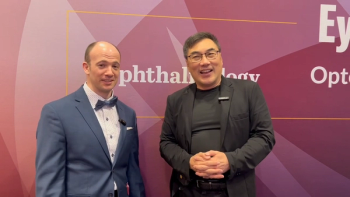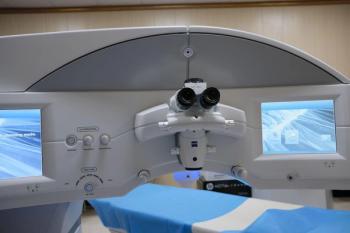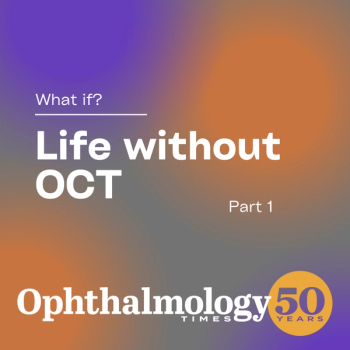
Two bottle limit often defines optimal medical therapy
Newark, NJ—Optimal medical therapy for most patients needing IOP-lowering treatment may be as simple as one bottle or two, said Robert D. Fechtner, MD.
Newark, NJ-Optimal medical therapy for most patients needing IOP-lowering treatment may be as simple as one bottle or two, said Robert D. Fechtner, MD.
Ophthalmologists who prescribe medications for glaucoma need to realize that the patient is really treating the disease, not the physician, and so the reality is that there may be no relationship between what is prescribed and what is used. With that in mind, the optimal medication regimen should be simple, practical, affordable, effective, and well tolerated. Treatment that includes three different bottles of medication is unlikely to fulfill many of those criteria.
When the decision is made that a patient requires IOP-lowering treatment, medical therapy remains the first line for most patients. As an initial consideration, it is critical to establish the untreated baseline IOP value. In most cases, treatment should not be initiated based on a single, recorded, elevated IOP because IOP fluctuates and sometimes widely.
Among the classes of medication available for IOP lowering, Dr. Fechtner usually starts with a prostaglandin analogue that offers the greatest IOP-lowering efficacy as monotherapy with the convenience of once-daily dosing. In addition, pro-staglandin analogues do not cause systemic adverse events and are generally well tolerated.
He considers beta-blockers as an alternative, but based on review of available data, including initial animal data evaluating dosing, Dr. Fechtner stated he believes twice-daily dosing of timolol 0.5% is over the top of the dose-response curve.
"Onset of effect with timolol can take a few weeks, and that is reflected in the product information for timolol 0.5%, which states that once the patient's IOP is stable, dosing frequency can be reduced to just once daily. For maximum efficacy, timolol probably only needs to be dosed once a day and perhaps even at a concentration of 0.25% in lightly pigmented eyes," he said.
Setting goals/assessing efficacy
Target IOP is established on an individual basis, taking into account the degree of damage, the baseline untreated IOP, and the estimated risk of progression. For assessing efficacy, Dr. Fechtner cautioned against using the "one eye" trial. Instead, after establishing the untreated IOP baseline with multiple measurements, he assesses efficacy within each eye by comparing the value measured at follow-up with the pretreatment IOP.
"We used to start with a one-eye trial and assume that if the IOP is lower than the fellow eye on the return visit, the drug is working. That would be nice if it were always true, but there is spontaneous asymmetric fluctuation of at least 15% or 3 mm Hg between eyes, and the first-eye response is not predictive of the response in the second eye. Therefore, it is better to treat the eye that needs treatment and assess efficacy at follow-up based on a target IOP," Dr. Fechtner said.
Multi-drug therapy
Newsletter
Don’t miss out—get Ophthalmology Times updates on the latest clinical advancements and expert interviews, straight to your inbox.


















































.png)


